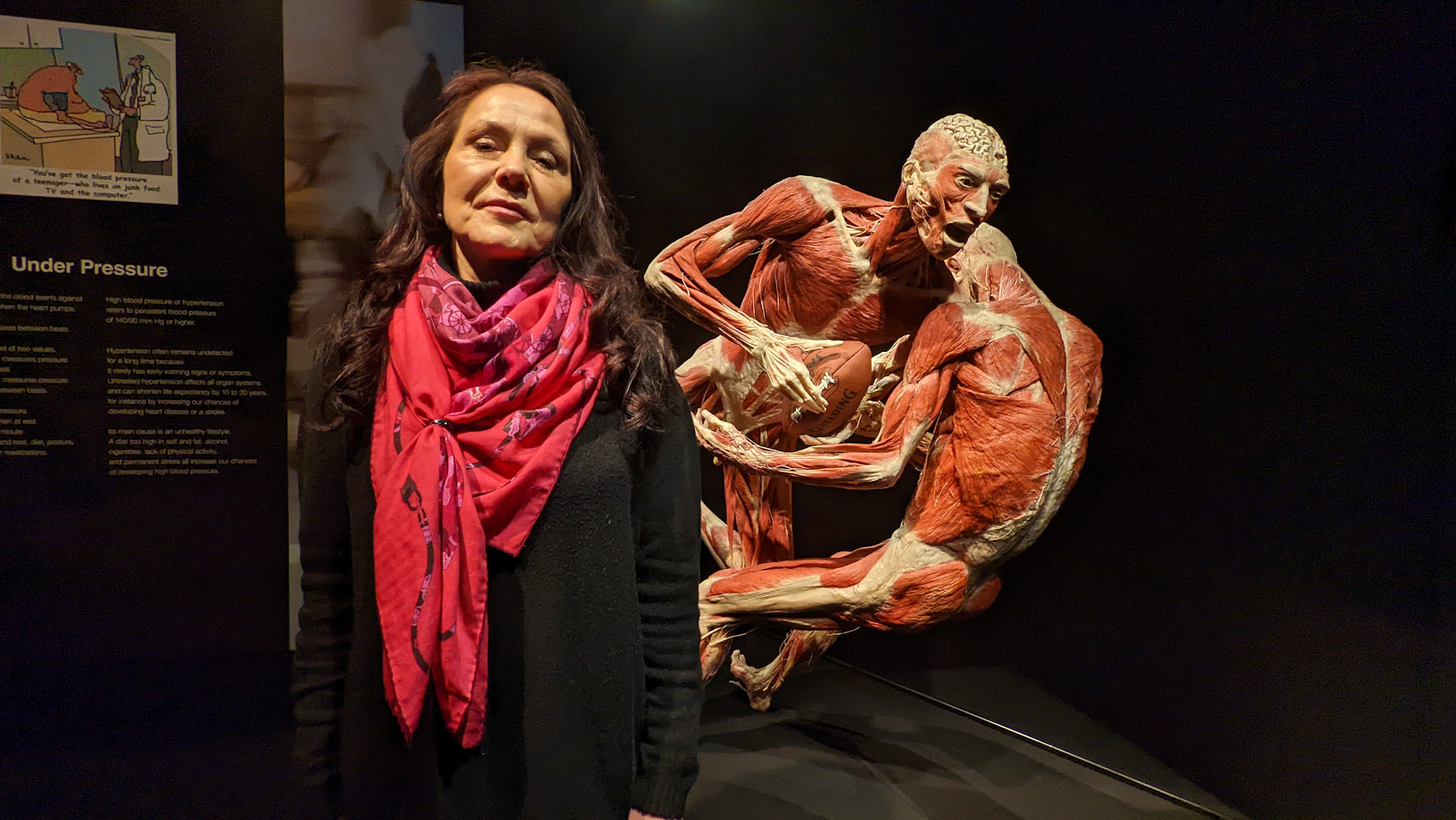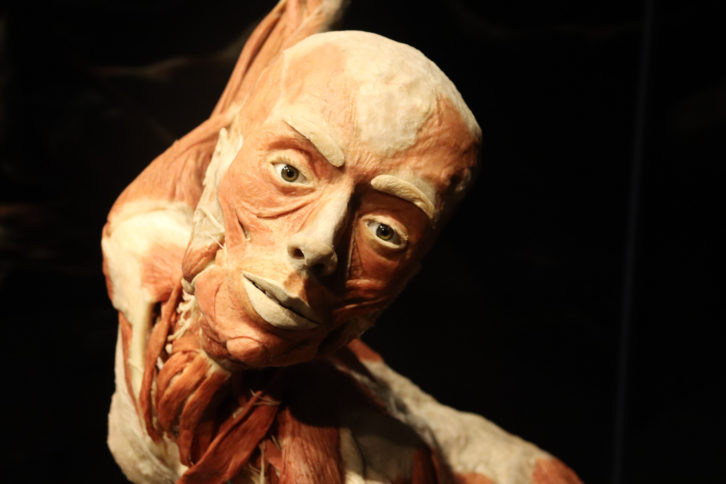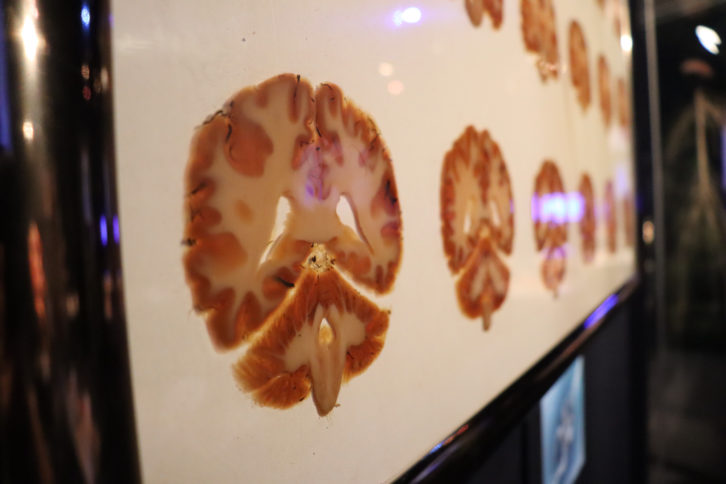Nova Scotia Museum showcases return of human cadaver show Body Worlds
Inside look at real bodies meant to educate, inspire good health

caption
Angelina Whalley at the media preview of Body Worlds Vital, at the Nova Scotia Museum of Natural History on Jan. 26.The first time that Body Worlds visited Halifax, the display of a smoker’s lung had a huge impact on at least one visitor.
“A woman wrote me a letter … she saw the smokers lung in the last exhibit, she quit smoking that day … she hadn’t smoked in six months,” said Jeff Gray about the impact that Body Worlds RX had on people in 2018. Gray is the general manager of the Nova Scotia Museum of Natural History.
The new Body Worlds Vital exhibit opened on Jan. 27 at the museum. For its second visit to Halifax, the display has doubled in size.

caption
A two-dimensional slice of a slim human is juxtaposed with an obese human in the Body Worlds Vital exhibit, at the Museum of Natural History in Halifax.Gray first saw Body Worlds in Toronto and was instrumental in bringing it to Halifax, the only place in Atlantic Canada to host the show.
The new exhibit focuses on common diseases and ailments, with explanations of how lifestyle choices can improve health and wellness. On display are entire bodies in athletic poses, single organs, and two-dimensional slices of body parts. There are comparisons of healthy organs with diseased ones.
The pioneer behind this technology, called plastination, is Gunther von Hagens, who invented it in the 1970s. Plastination is a process that stops decomposition and preserves bodies for educational use.

caption
One of the full human bodies on display at the Museum of Natural History in Halifax.Von Hagens’ wife, Angelina Whalley, was at the Halifax media preview on Jan. 26.
“We carry our bodies all through our lives, we are literally bodies, it is the basis of our very existence,” said Whalley.
“Our body is not just a divine gift of nature, it is our lifelong responsibility … small changes make a difference.”
She said that because people cannot see what’s inside of them, they often take their bodies for granted until they don’t function well.
She calls Body World “preventative medicine,” and it makes her happy to empower people.
When asked about controversy that surrounded Body Worlds in other places like Germany, Whalley said, “People had the idea that this might be something like a ghoulish horror show … it took a while until people understood that this is a very sincere exhibition.”
Since 1995, when Body Worlds first opened in Japan, there have been over 52 million visitors, globally. A list of willing body donors has grown to 20,000.
High costs, paperwork and regulations make it “pretty cumbersome to get bodies from far away to Germany,” said Whalley.

caption
A two-dimensional look at the prefrontal cortex of the human brain, part of the Body Worlds exhibit.She said they keep records at the Institute for Plastination in Heidelberg, Germany. But once a specimen goes on display, it is hard to match the bodies back to a paper trail. They do not have names nor clues as to the people they once were.
Gray said that reception from the public in Halifax has been positive.
Gray describes the Halifax 2018 exhibit as “really busy,” and they “had to set up a rope like a nightclub,” allowing a few people in at a time. “To experience people’s excitement for museums is really quite wonderful.”
He estimates that 94,000 people came in 2018, which became the most popular attraction at the museum. He recalled seeing 17 busloads of high school students in one day.
“It’s hard to know, coming out of pandemic times, if we’ll match those numbers, but we are certainly hopeful,” said Gray.
About the author
Crystal Greene
Crystal Greene (she/her) is originally from Winnipeg, where she lived most of her life. She now lives in Kjipuktuk/Halifax with her toddler....
